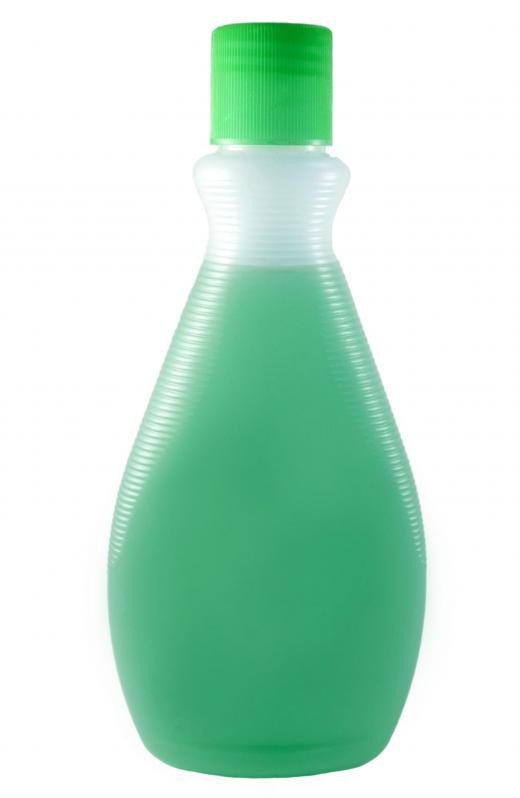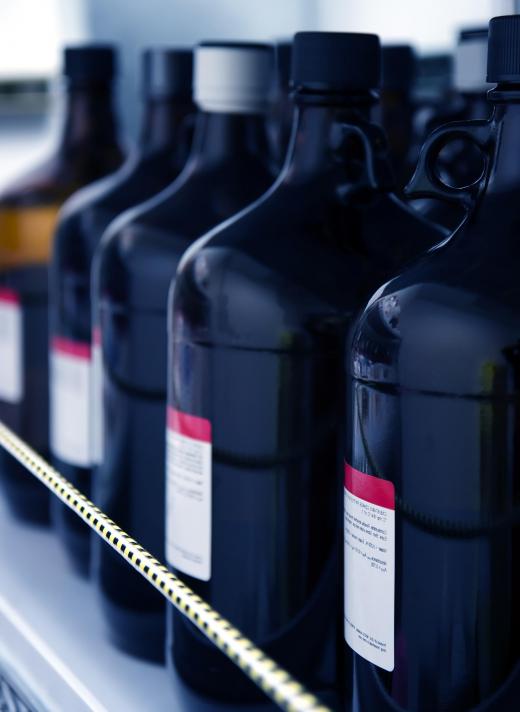Acetone extraction is a method for separating certain specific substances from a sample of material using the solvent acetone, which is an organic compound with the chemical formula C3H6O. This compound is an excellent solvent that is widely used in industrial processes, in household products such as nail polish remover and in laboratories because of its ability to dissolve many organic compounds, including oils, fats and plastics. It also is very volatile, making it easy to isolate any dissolved substance simply by evaporating the acetone. The extraction process can be used either to obtain the desired substance from the raw material or to remove unwanted impurities, depending on the solubility of the compounds comprising the material. Acetone extraction might be one of several steps in the extraction and purification of useful compounds from raw materials, with other solvents being used at different stages.
One major industrial area in which acetone extraction is employed is in the recycling of plastic waste. Household and industrial waste might contain a variety of types of potentially reusable plastic that can often be separated manually before processing, but they will contain numerous impurities. Acetone extraction can often be used to recover relatively high-purity plastic. For example, acetone readily dissolves polystyrene and can be used to recover this useful material from a mixture of plastics.

Another very useful material that can be recovered by acetone extraction is polymethyl methacrylate (PMMA), a transparent plastic marketed under several trade names. It is used as a glass substitute that is cheaper than similar polycarbonate products and has the advantage of not requiring harmful bisphenol for its synthesis. After treatment with other solvents, plastic waste containing this product is boiled in acetone to extract the PMMA, which might be used as it is or converted to methyl methacrylate, the raw material for its production.

Acetone extraction also is a commonly used laboratory procedure for obtaining specific compounds from various biological materials and is much used in analysis to detect, or determine the content of, various chemicals in a sample. Generally, a sample of the material is finely ground or reduced to a pulp before being mixed with acetone. Acetone-soluble compounds will go into solution; the solution can then be drawn off or filtered and the compounds of interest extracted. This method might be used, for example, to determine the levels of pesticide residues in human blood and tissue, in foods and in soil, and it is an important method for monitoring human exposure to potentially harmful substances. Other laboratory uses for this procedure include the extraction of chlorophyll and other photosynthetic pigments from plant material and determining the fat content in samples of food.
